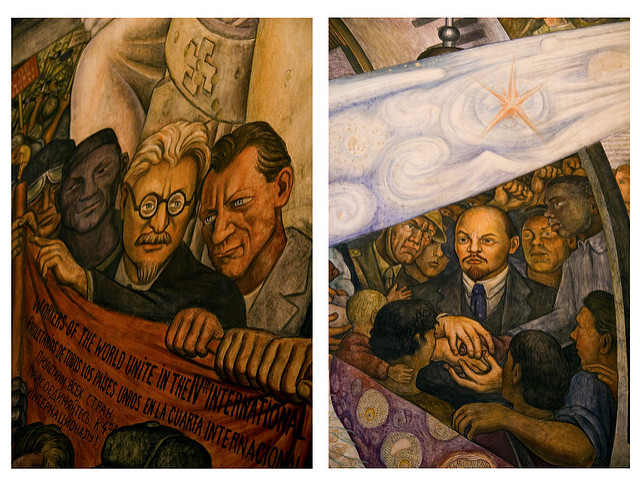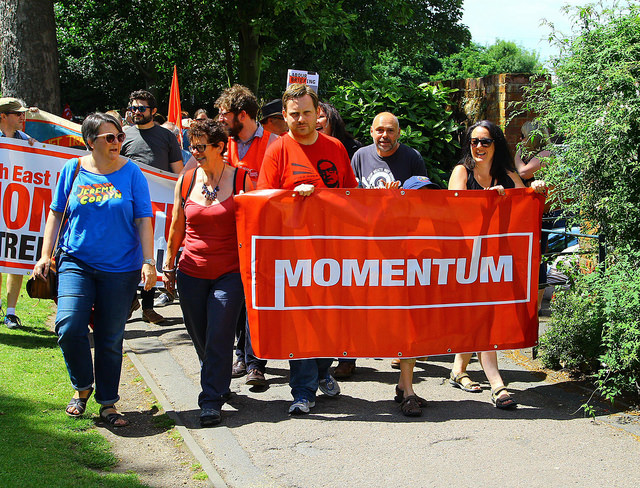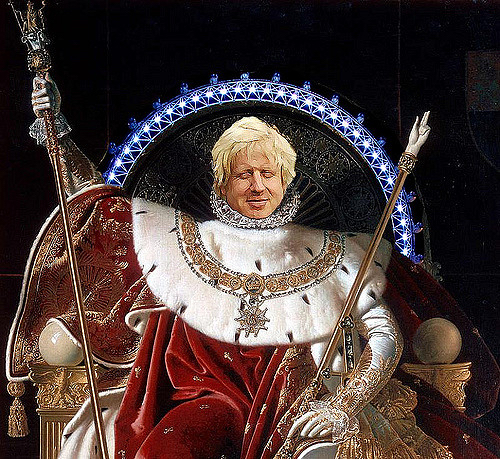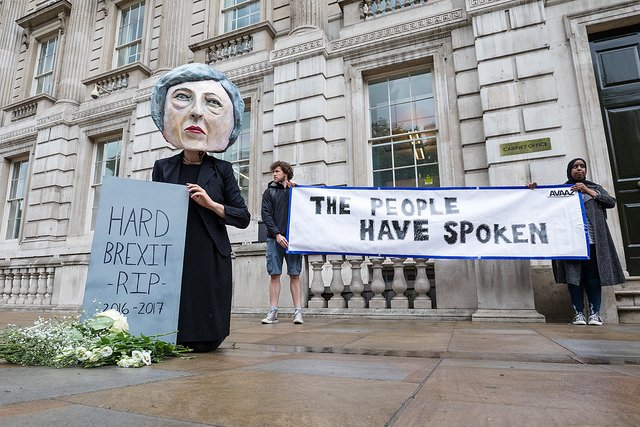You can tell Jeremy Corbyn is worth supporting just by looking at his opponents: Owen Smith, Angela Eagle, Lisa Nandy, Hilary Benn, Chuka Umunna et alia. A long list of nobodies and know-nothings, each of them produced by the spawn pool of career politicians. The rise of Corbynism is a great revolt by people who are sick and tired of conventional politics.
So it was quite amusing to hear Deputy Labour Leader Tom Watson talking up a new red scare within the party ranks. He claims there is a sinister Trotskyist rhizome behind the sudden expansion of the membership and the push towards greater internal democracy. It is as if 600,000 members are either themselves either willing participants or the useful idiots of a Trot plot.
For starters, there are not 600,000 Trotskyists in Britain. If there were even 60,000 organisers in the country, the left would not need to look to Labour for radical change. Even the biggest Trotskyist organisations were composed of just a couple of thousand people (many of them inactive). Yet it is inconceivable that 600,000 people represent more than a far-left conspiracy.
The Blairites need a means of explaining away the crisis they have created. And the left are a real force in this political shift. So the scapegoat is obvious. Faced with defeat, the Labour right – or what Tariq Ali calls the ‘extreme centre‘ – conjures up an image of a vast web of entryists conspiring to steal their party in broad daylight.
Of course, the brutal truth is the Labour right had very little to live for until Jeremy Corbyn came along. The Blairites lack any kind of vision to counter the Conservative government. Blairism-Brownism has been exhausted by its 13 years in power. The big beasts have all abdicated, and the Third Way mantra cannot propel itself forward any longer.
As a result, Labour has not functioned as an opposition for the past six years. Ed Miliband was incapable of holding together a coherent message or policy agenda. In fact, the Miliband leadership was a holding action in the absence of any real leadership. This is why Harriet Harman led the party to abstain on welfare cuts. Corbyn is the only figure to present an alternative. But it wasn’t always like this.
Back to the Future
Back in the 1980s, Neil Kinnock was able to fight-off the Labour left embodied by Tony Benn and his supporters; as well as the Revolutionary Socialist League (otherwise known as ‘Militant‘), which was busily trying to construct its own party within Labour before taking over the rest of the body political. This was the age of entryism.
Kinnock became leader in the wake of Labour’s 1983 defeat. Michael Foot was written-off as a failure for being “too left-wing”. Actually, Labour lost because of the Falklands war and the split with the Gang of Four. The right decided to pass the Labour Manifesto – infamously derided as “the longest suicide note in history” – without any edits in order to pin the blame on the left. It worked.
Still, the Labour Party was mired in this crisis by the decline of social democracy. In response, Tony Benn and the so-called ‘hard left’ argued that the party had to move leftwards, but the Bennites were blocked from gaining influence. However, the so-called ‘soft left’ and the Labour right failed to produce any kind of successful electoral strategy. Kinnock was able to stamp out the Militant entryists, but he could not win on the national stage.
Under Kinnock’s leadership, Labour lost two elections in a row. There was no agenda to advance, as the party of social democracy began to shed every aspect of its politics. The end result: New Labour. But this would not resolve the real crisis, it would only stall it. So it is apt that Lord Kinnock is now fully on the side of the Blairites in their war against Corbyn and the membership.
The 1980s hang over the current crisis in many different ways, the references to the IRA, the disputes over NATO and Trident, it’s all there. This is the deadweight of generations past. The Labour right recognises its old foe and cannot resist nostalgia for the Cold War struggles. In a leaked speech to the PLP, Lord Kinnock clung to history:
In 1918, in the shadow of the Russian revolution, [Labour] made a deliberate, conscious, ideological choice, that they would not pursue the syndicalist road, that they would not pursue the revolutionary road – it was a real choice in those days. They would pursue the parliamentary road to socialism.
It is all very telling. The speech concluded with Lord Kinnock hammering away on a table and shouting: “There will be no split! There will be no retreat! Damnit, this is our party! I’ve been in it for 60 years, I’m not leaving it to anybody!” That’s right, the Labour members are just anybody. The PLP sees itself as Labour’s core, the members are incidental and suspect for interferring. That’s where Trotskyism comes in as a scapegoat.
Trotsky’s Ghost
At first, it may be hard to see how the actions of a dead Russian revolutionary matter much to contemporary politics. No one worries about Stalinists or Maoists these days, we’ve even forgotten about the poor Hoxhaists. And still, the spectre of Leon Trotsky continues to haunt the capitalist world in the form of various factions.
It’s not hard to see how Trotskyism has outlived all other tendencies. The collapse of alternative models – the Soviet Union is gone, and China is now the workshop of the capitalist world – has cleared the floor. Few people would seriously take inspiration from North Korean ideas of juche and songun. Even Castro’s Cuba lacks the sex appeal it had when Che Guevara was immortalised by film and photography.
Perhaps the resilience of Trotskyist groups is down to the absence of an regimes modelled upon the ideas of Leon Trotsky. Indeed, the appeal of Trotsky is the possibility that the Soviet experiment did not have to become an abattoir of socialist ideals. If only the left Opposition had won in the 1920s, it could have gone differently.
Of course, it is always worth noting that Leon Trotsky was deeply implicated in the Soviet Union. It was the culmination of a lifelong struggle for a better world. This is why Trotsky preferred to see the USSR as a “degenerated workers’ state” to rescue the hopes he had from Stalin’s gulags. The possibility of another kind of society was too much to give up on.
Trotsky even divided his supporters in the late 1930s when he prevaricated on the question of Soviet aggression. As long as the USSR was still some kind of workers’ republic, the revolution could be salvaged and exported abroad. This calculation allowed Trotsky to separate his condemnation of Stalinism from the state as a whole.
The exact character of the Soviet system is still up for debate. Whether or not the Soviet Union was a degenerated workers’ state, an example of bureaucratic collectivism, a kind of revolutionary Bonapartism, or even state capitalism, continues to divide Trotskyists and radicals everywhere. Perhaps it is easier for latter-day Trots to pin labels on the USSR than it was for the old man.
In the orthodox Marxist theory of history, capitalism is to be superseded by socialism, but it was not clear where the USSR fits into this picture. After all, Russia could not make the leap from its quasi-feudal conditions to a post-capitalist future. The transition required that the Bolsheviks use non-capitalist means to amass the surplus necessary to build socialism. It didn’t go to plan, in short.
So the paranoiacs are right in a way. As long as capitalism exists the socialist critique of it will always be relevant, and as long as Marxism is around the Soviet question will remain. The Trotskyists offer answers. Not that this means the Blairites have much to fear from a Trot takeover. They have only themselves to blame for the current crisis.
The Centre Cannot Hold
The New Labour project was designed to take the working-class for granted as it sought the votes of conservative middle-class people. This strategy of triangulation worked to win a landslide in 1997, after 18 years of misery under Conservative governments. The vote consistently fell in subsequent elections and Labour ultimately lost five million votes.
The 2010 defeat was the consequence of New Labour. Many working-class people felt the party had abandoned them because it had done so. They would rather not vote than cast a ballot for a Conservative or a Blairite. Miliband failed to distinguish himself as a Labour leader, and the Tories were able to win on the basis of 37% of the vote – which is less than 25% of the eligible electorate.
So if Labour’s defeats are based on demobilisation, what lies behind Corbynism? Well, it appears that the traditional left-wing supporters of the Labour Party went dormant following the humiliations of the 1980s. But these people re-entered politics as soon as the Labour left had a chance of winning.
At the same time, the vast bulk of the new members are relatively inactive and politically open. As Richard Seymour argues, they could become socialists, but they are drawn to Corbynism primarily as a new kind of politics. So it is wrong to mistake the influx as a sign of rising militancy. It is more so that the Blairite project has failed, and people see an opportunity for something new.
The rise of Jeremy Corbyn may be a consequence of the politics of the last 30 years, but it is not a re-run of the dogfights of the ’80s. The extreme centre was only able to hold together as long as people remained passive and hopeless following the so-called ‘end of history’. The good news is the election is almost over and Corbyn looks certain to win. The bad news is it’s not over quite yet.
Photograph courtesy of Ismael Alonso. Published under a Creative Commons license.





